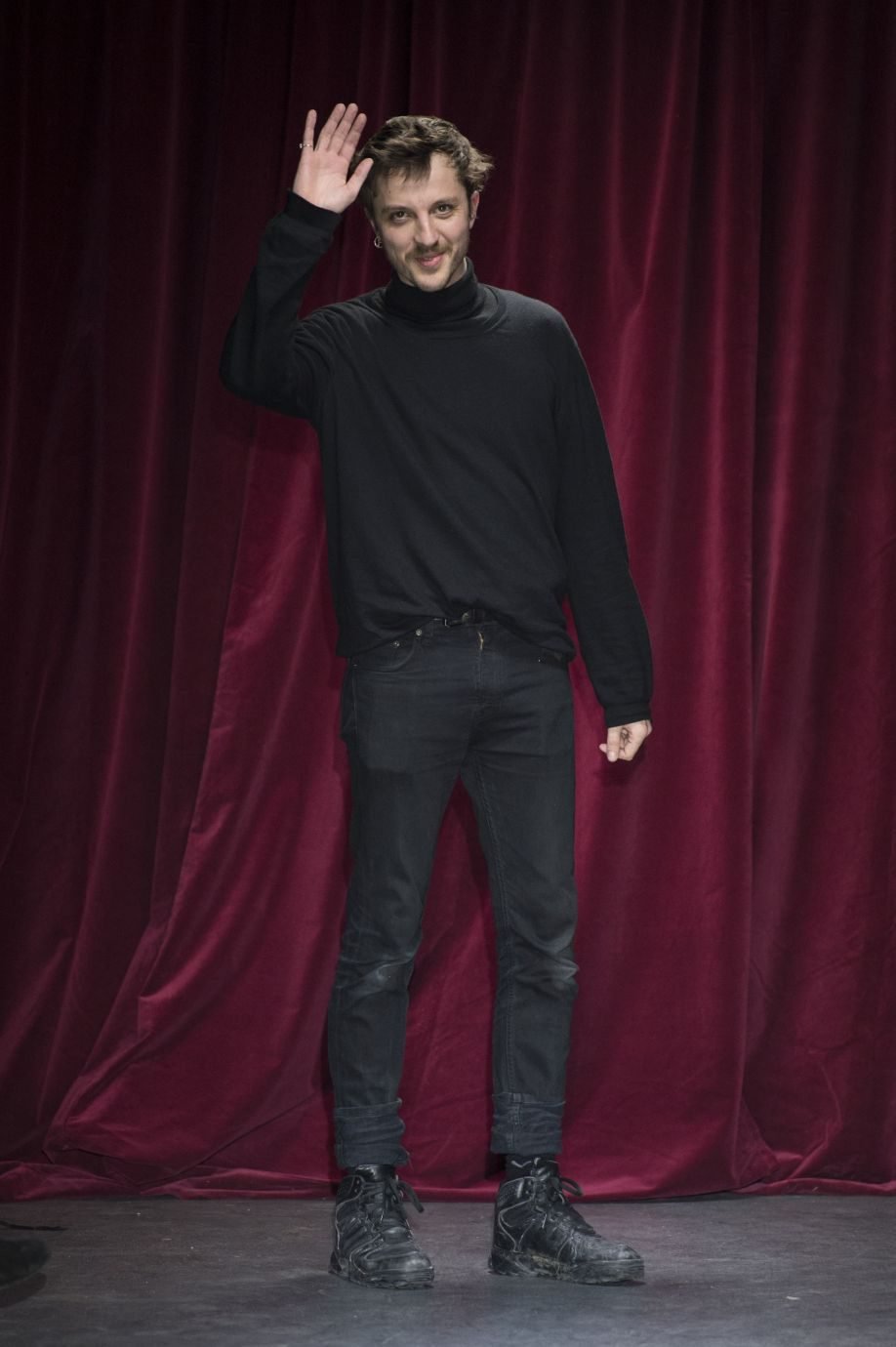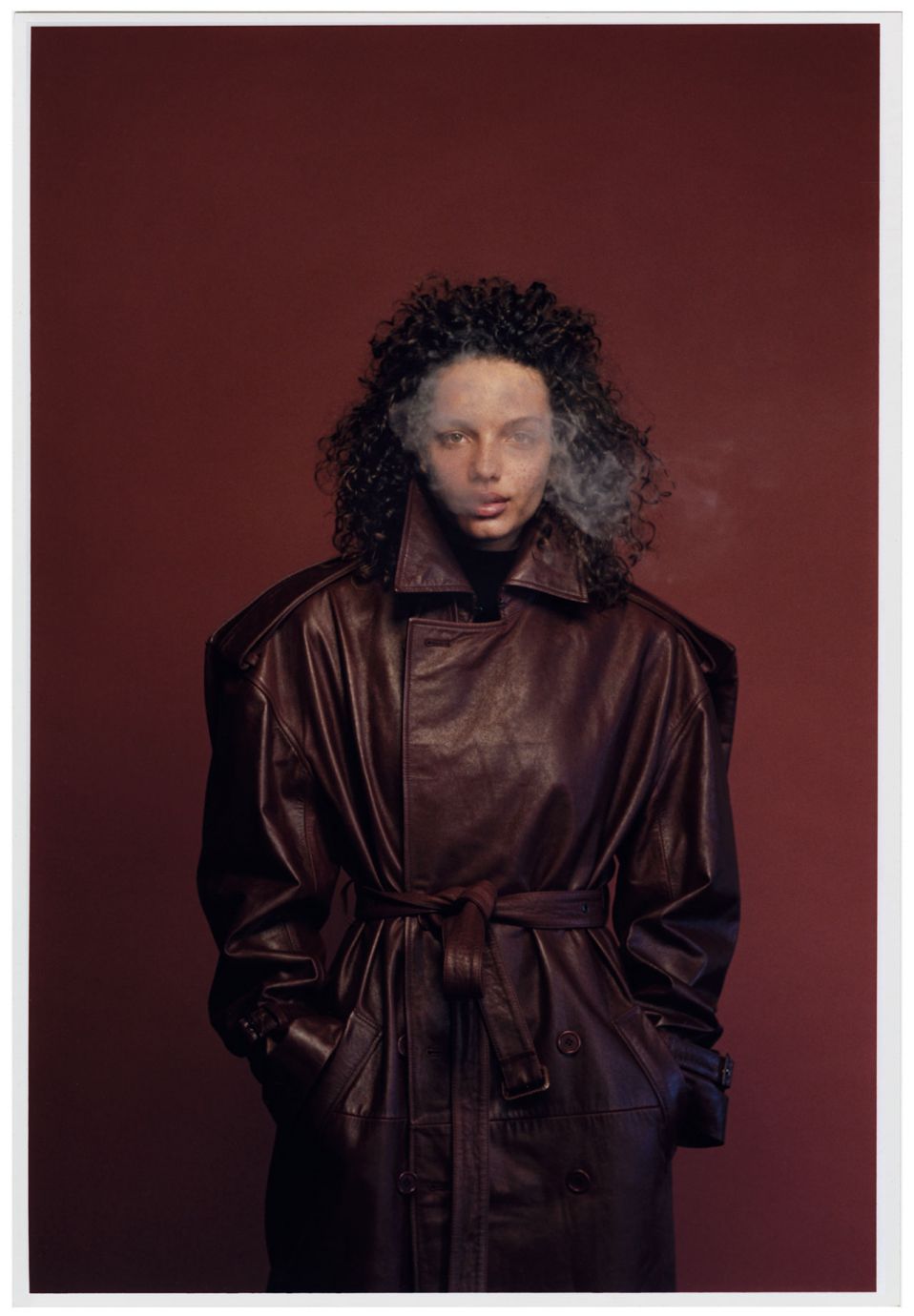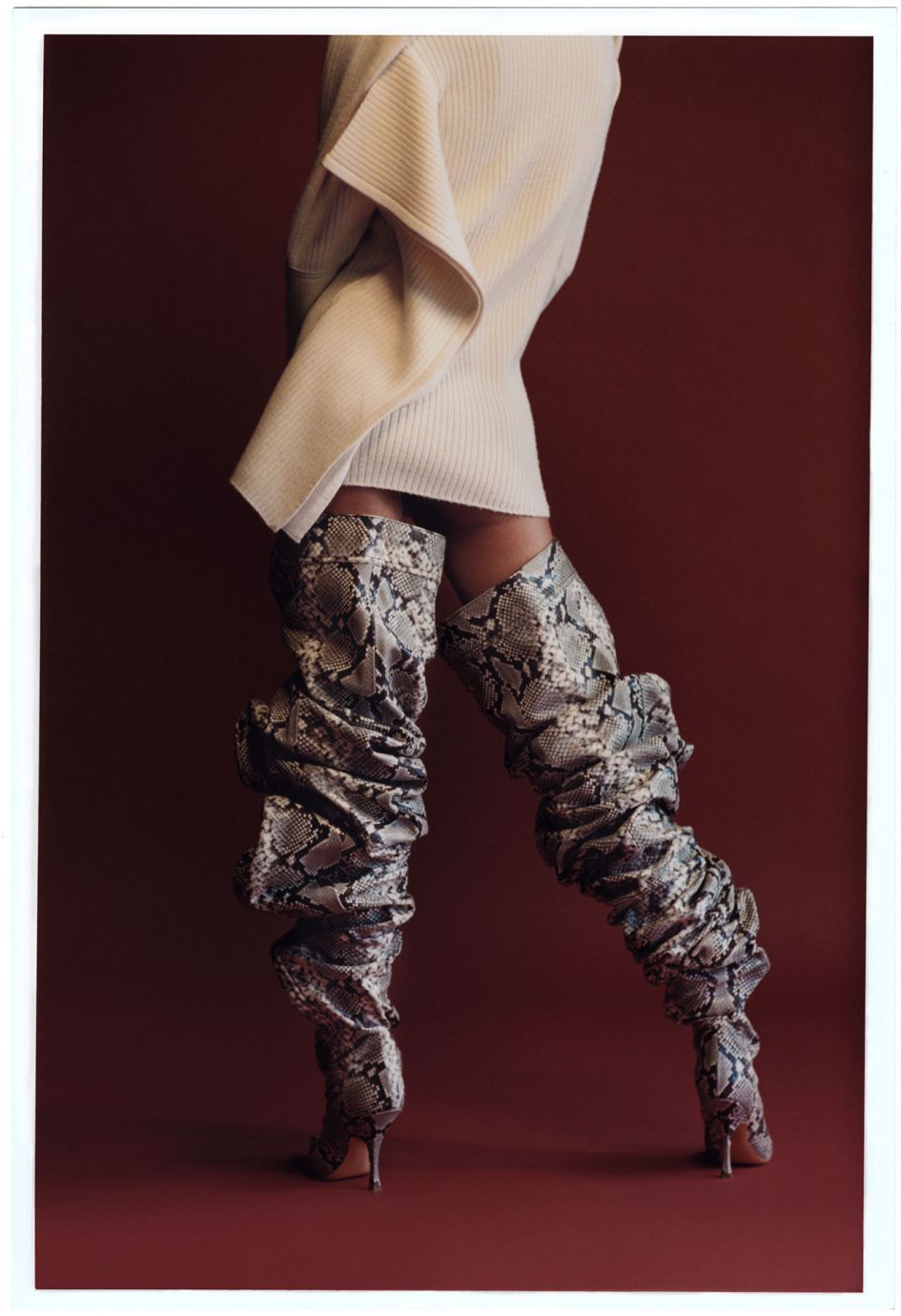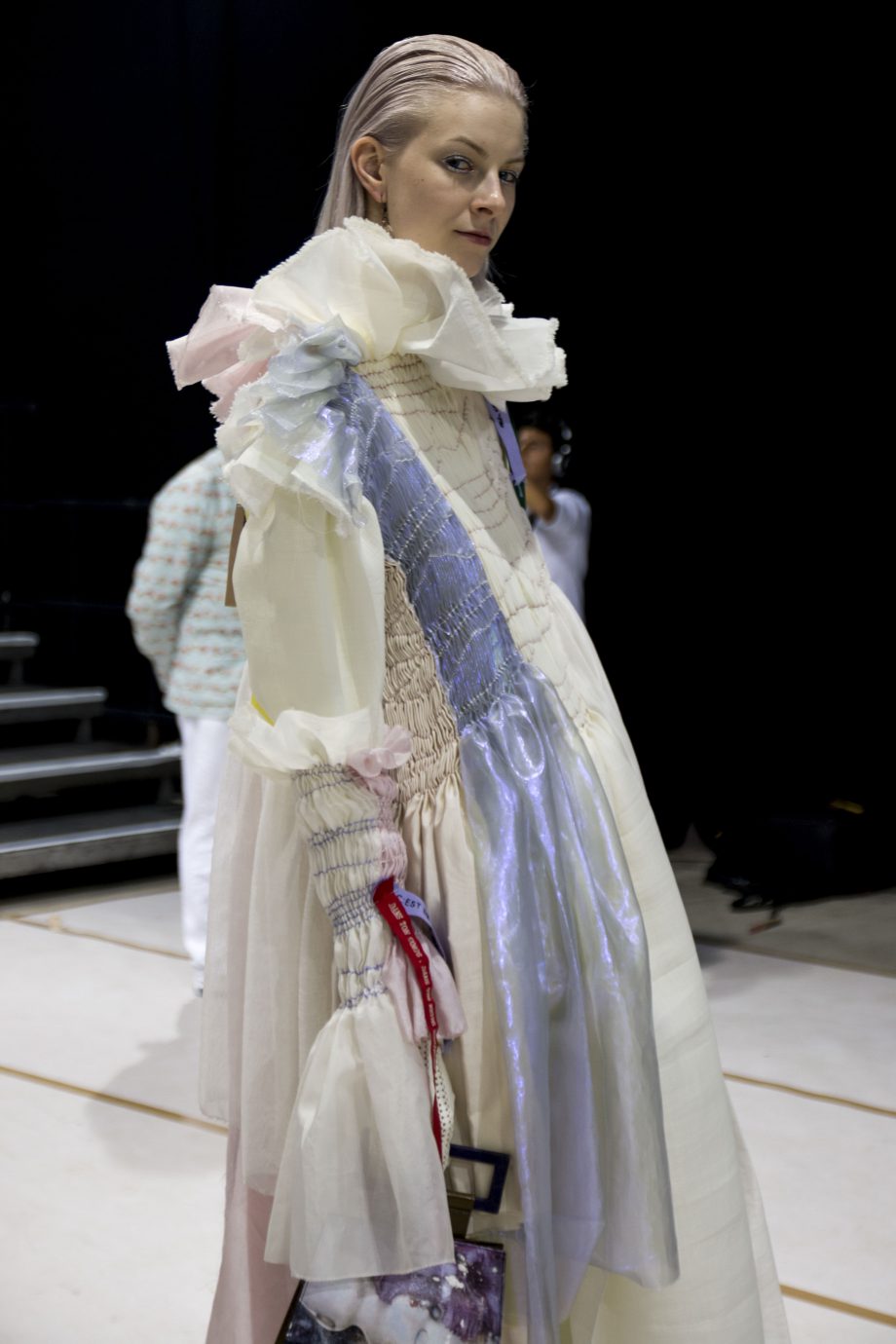In their effort to depict this too-cool-for-school king of the night, journalists easily glance over the fact that the Bruges-born designer is also a hardworking team player who helped save a brand from bankruptcy. Y/Project was originally founded as a partnership between the French designer Yohan Serfaty and the businessman Gilles Elalouf. It was known as a sophisticated menswear label when Yohan unexpectedly died in 2013 and Glenn was asked to take over. The young designer didn’t feel a personal connection to the legacy, but eventually cracked for the opportunity to work with existing retailers and production structures. These weren’t as stable as Glenn had initially hoped, and for the first few seasons, he fought to keep the company afloat.
During that time, he also transformed the label’s identity, adding a womenswear line and renovating the staple black silhouettes into the explosive, baroque-inspired visions we see now. His postmodern mashup of high and low fashion references made him one of Paris’ most talked about brands and, more recently, the winner of the 2017 ANDAM Award.
I met him on one of the first sunny days in Paris, in a rooftop studio where he was overseeing a shoot for his latest collection. In between styling touch-ups, he replied to my nervous questions with careful consideration, taking time to explain his business plan, creative process, and studies at the Antwerp Academy. The imaginary Glenn I had constructed in my head was now completely gone. But then again, so was his platinum blonde hair. Maybe the two were related?
With your latest collection, you have really grown into the identity that you wanted for Y/Project, what was the last season like?
The new Y/Project is here for a year and a half. The third collection is where we really imposed our vision and our woman and our statement, so obviously every year or every season, we just reconfirm that story and add extra layers of fun and excitement. We also introduced shoes for the first time. The whole brand building happened very slowly. Because I took the brand over from someone who passed away, it was a difficult transition. There was mourning in and outside of the company, so out of respect for Yohan we decided to take a very slow transitioning. After one year and a half we reached where we wanted to be visually, and now we started adding new product groups. It’s very much the ideology of Y/Project to take it very slow. The visuals might be strong and extravagant, but how we build the team and grow internally, that’s different. I have a CEO with an economics background, he did Harvard, and I really trust his strategy. I see a lot of brands growing too fast and burning themselves, so we take it step by step.
“I SEE A LOT OF BRANDS GROWING TOO FAST AND BURNING THEMSELVES, SO WE TAKE IT STEP BY STEP.”
That is interesting. Young brands today will have that all figured out before launching – branding on point and media hype assured.
It’s true that we didn’t have the hype other brands had. To be honest, the brand wasn’t supposed to survive when I took it over. It was a brand in mourning, a brand on the brink of bankruptcy, with a very difficult image (close to Rick Owens), which is beautiful but hard to stand out with. Being a bankrupt company, only doing menswear, in a sensitive story… it was very difficult to manage. I’m sometimes surprised that we did it. Conviction plays an important role, you really have to believe in something for it to work.
It does make us wonder… what convinced you to take over the brand? Obviously, there’s the temptation of having production already figured out.
Honestly, when the job was proposed to me it felt like a very well-settled company. Especially after doing my own brand for three seasons, where I did everything by myself and was freelancing on the side to invest in it. After three seasons I already had a bit of a burnout. I was tempted by the structure of a settled company, I thought it would be easier, but it wasn’t. I was tricked! [laughter]
No, I’m really happy now, I get along really well with my team. The secret of every success story is the team. We knew it would be a long project, but as a team we restructured everything. I put a lot of energy into guiding everyone. Me being 30 at that time, I was the oldest of the whole team, my head of sales was 22, my head of studio was 22. They were all extremely motivated, but very junior.
“IF YOU DON’T HAVE THIS MASSIVE NETWORK OR TREASURY BEHIND YOU, YOU SHOULD DEFINITELY TAKE YOUR TIME.”
Did having your own brand prepare you for this?
Not really, but it does teach you to be persistent. Before I had my own brand, I had a few experiences in the business – I worked for Jean-Paul Gaultier, the classic French couture house, then I worked for Bruno Pieters, a sustainable brand, Weekday, which is part of the H&M group, and I worked for an independent designer in Istanbul – so I really had a large variety of experience. This was definitely my school. Every student should take time to experience the industry and meet people.
There are designers who can start their own label right after graduation, but they either have a lot of money, or they’re very well connected. I saw brands in Paris that had twenty-five salespoints before even launching. If you don’t have this massive network or treasury behind you, you should definitely take your time. In the beginning you always make a lot of mistakes. Only by learning about them before, can you catch up on those.













